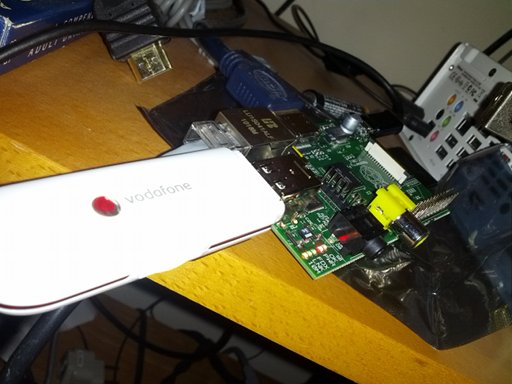
I'm currently getting involved in the Coding For Kids scene. I'm setting up a workshop in my local library to teach kids programming - specifically, the MIT language Scratch. I've been left slightly dissatisfied with the unstructured nature of the Scratch teaching materials. While it's quite fun to teach a cat to dance - it doesn't seem to be building up to anything. I'm also working with AppsForGood - it's a project run in secondary schools which aims to get students to research, design, and …
Continue reading →
This is a bit of a brain dump / diary of what I've discovered about using 3G dongles to send SMS using Python on the Raspberry Pi. Here is how to use Python to send an SMS from the Raspberry Pi via a 3G USB dongle. In order to talk to the dongle, we need to install pyserial wget http://pypi.python.org/packages/source/p/pyserial/pyserial-2.6.tar.gz gunzip pyserial-2.6.tar.gz tar -xvf pyserial-2.6.tar cd pyserial-2.6 sudo python setup.py install Save this file as sms.py - make sure you change …
Continue reading →
Cracking on with my Raspberry Pi, I've written my first program in Python. The aim - to be able to send an SMS via a 3G USB dongle. The problem - the way SMS needs to be encoded is hideously complicated. For example, suppose you want to send "This is a very simple message :-)" to the phone number +447700900123. This is the command that you need to send to your dongle: AT+CMGS=42 079144872000626001000C9144770009103200112154747A0E4ACF416190BD2CCF83E6E9369C5D06B5CBF379F85C06E95A29 WHAT? THE? …
Continue reading →

